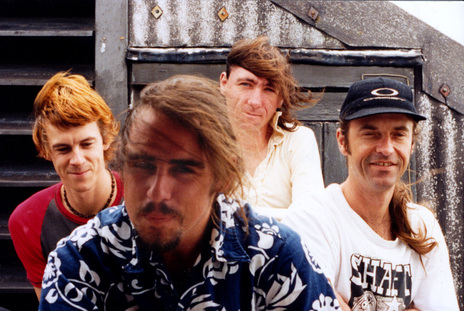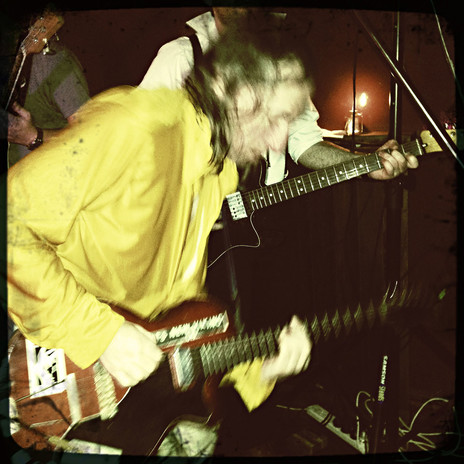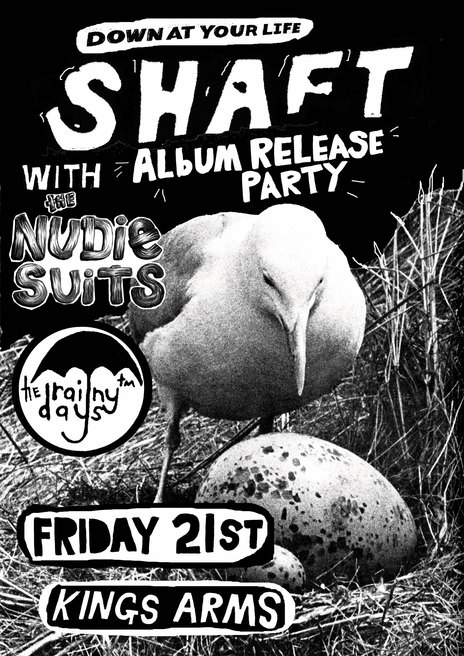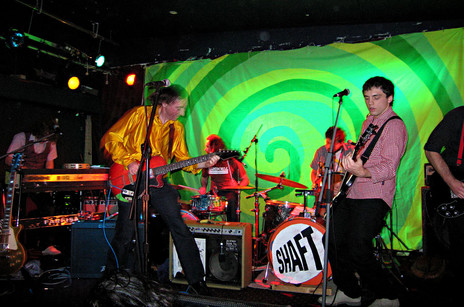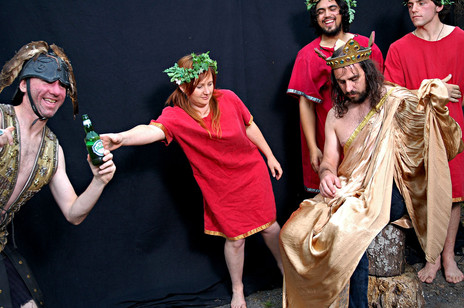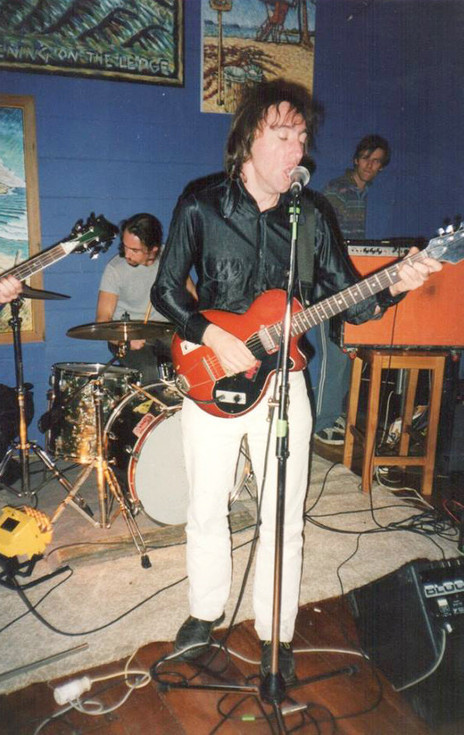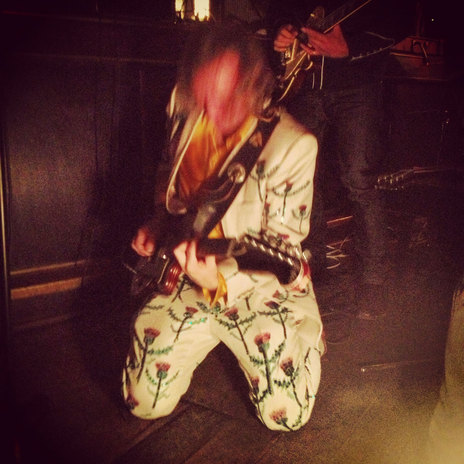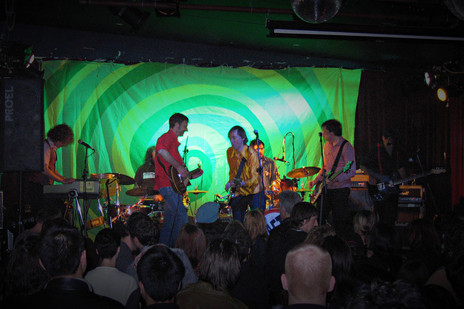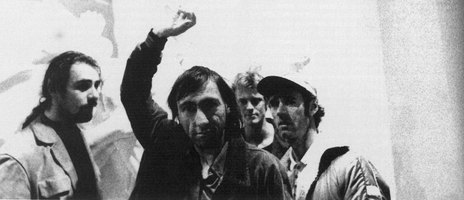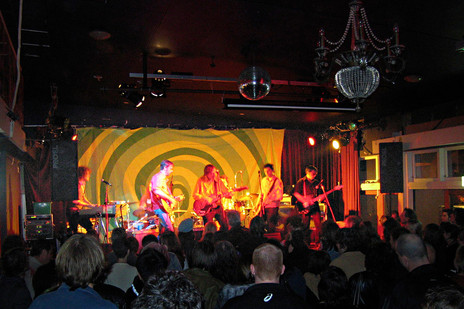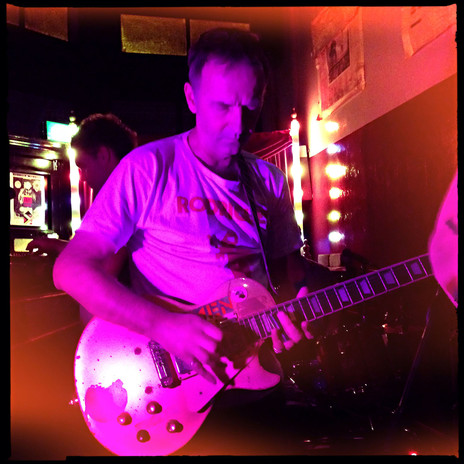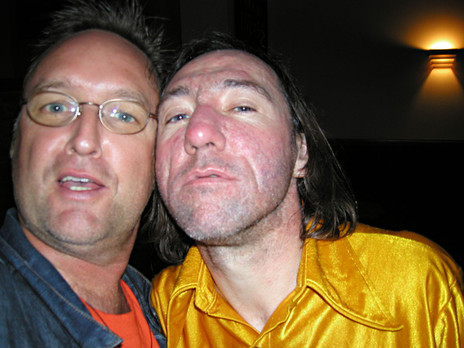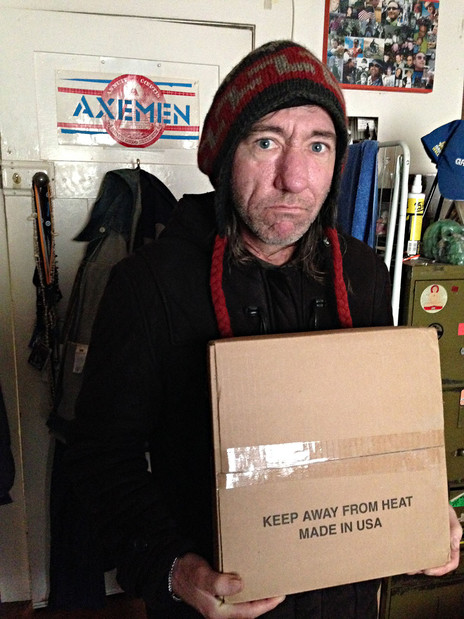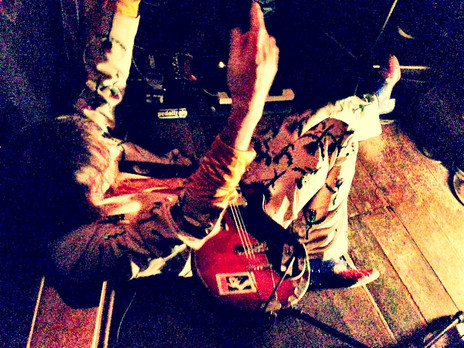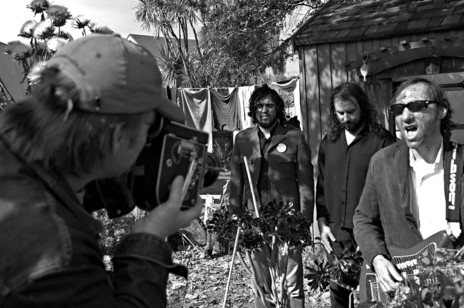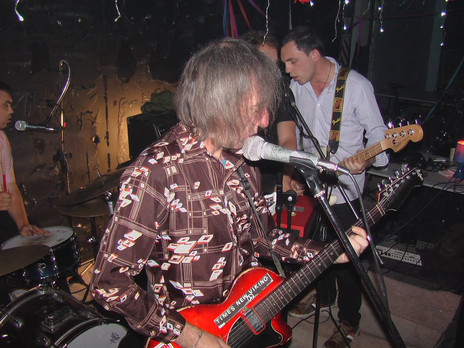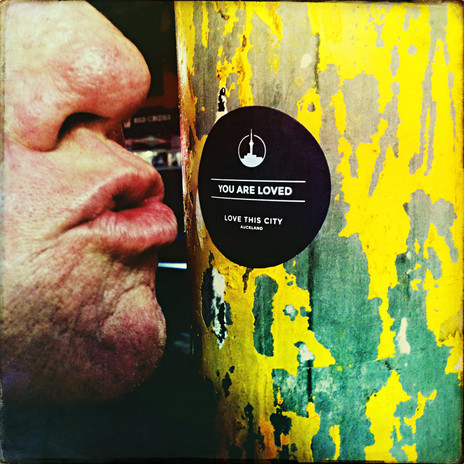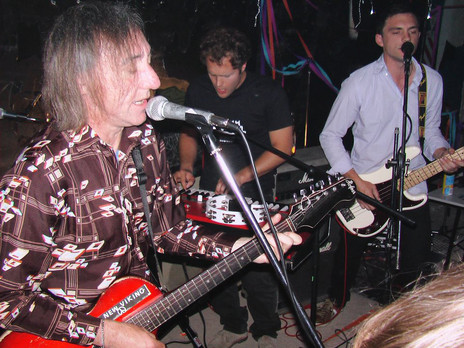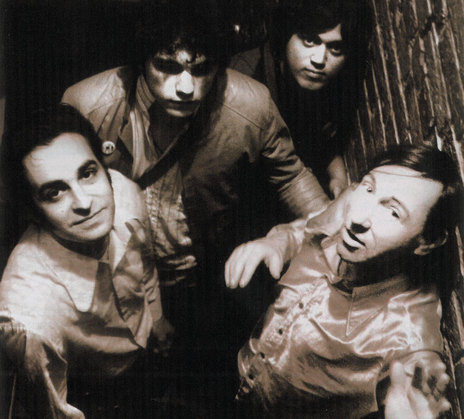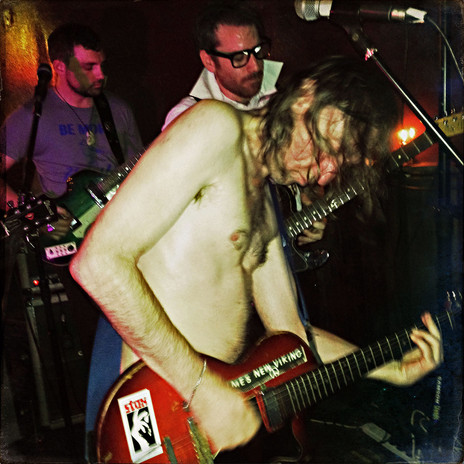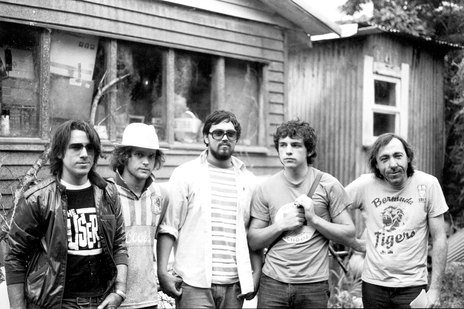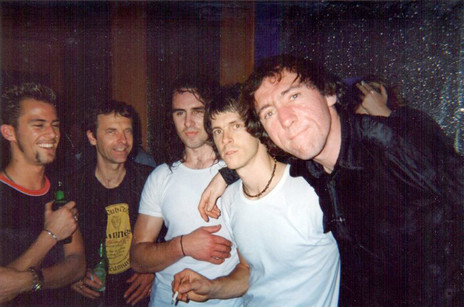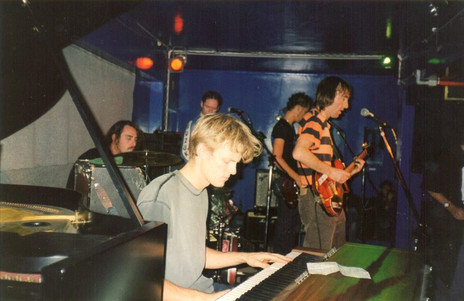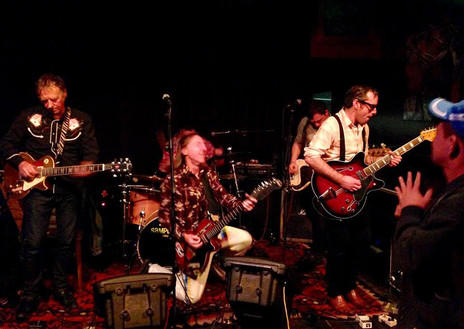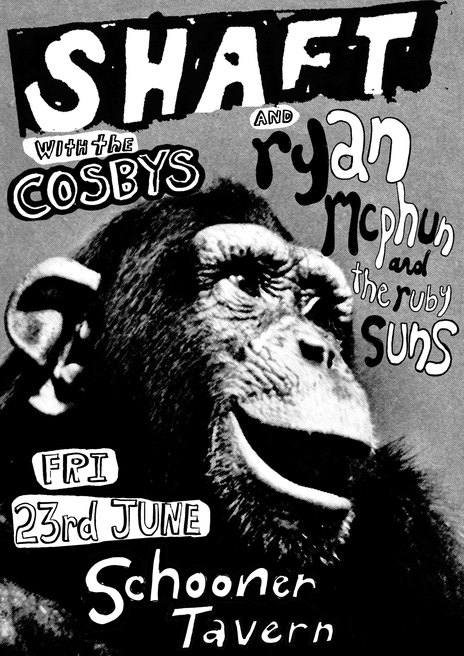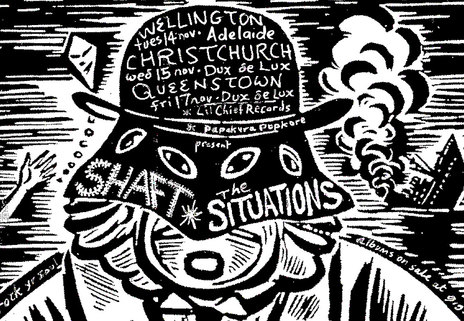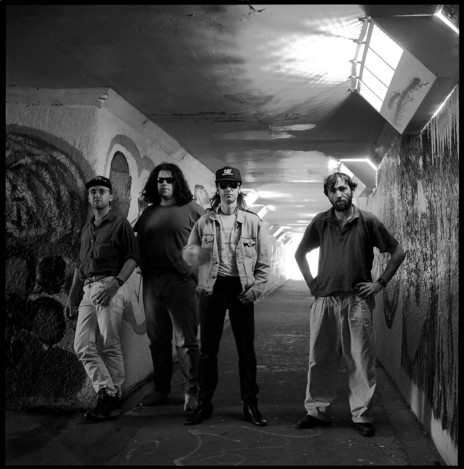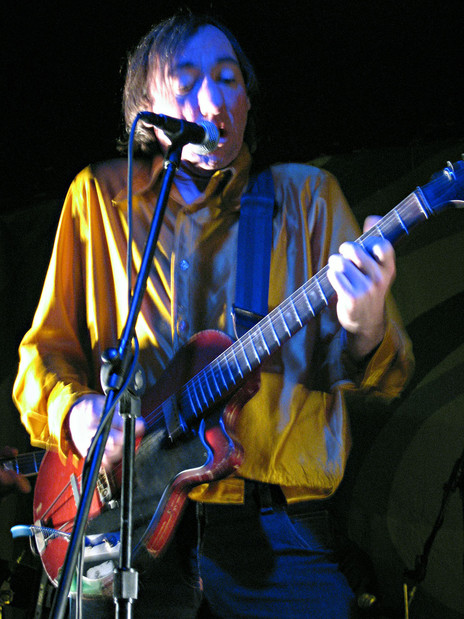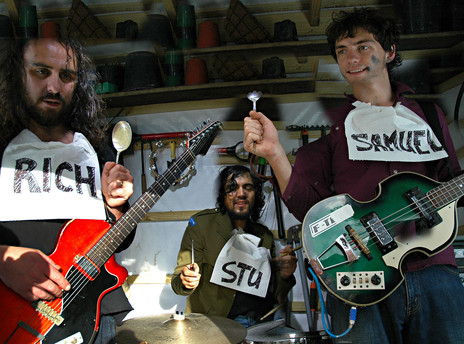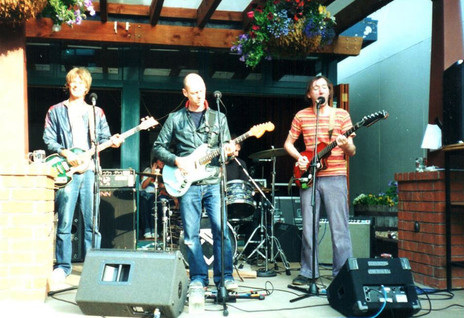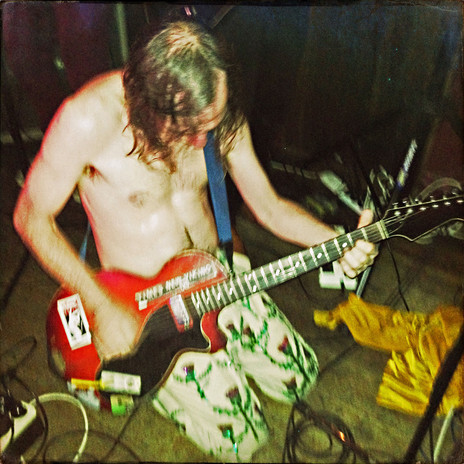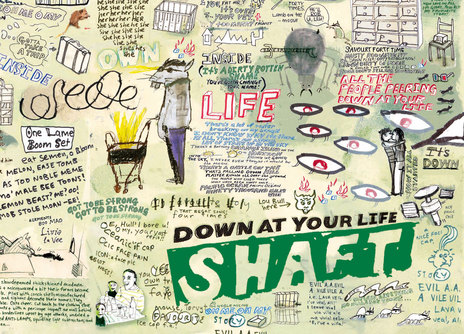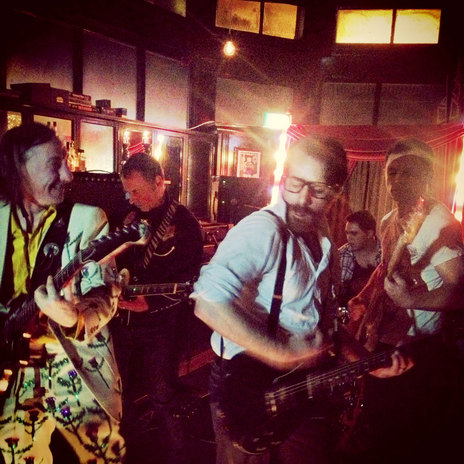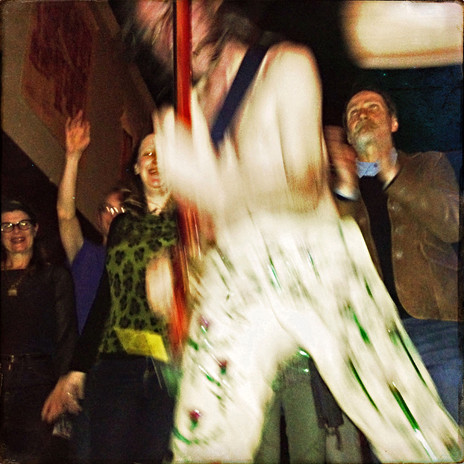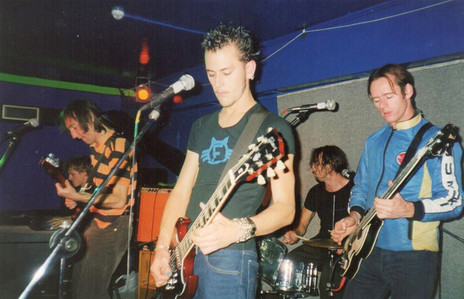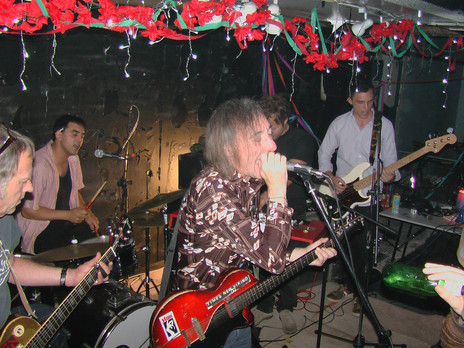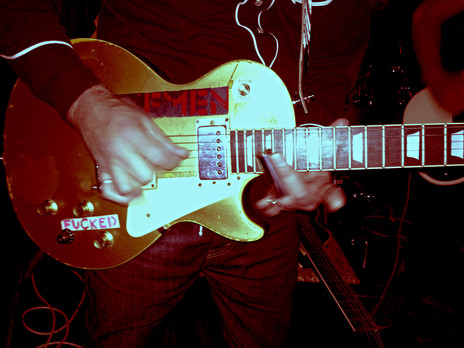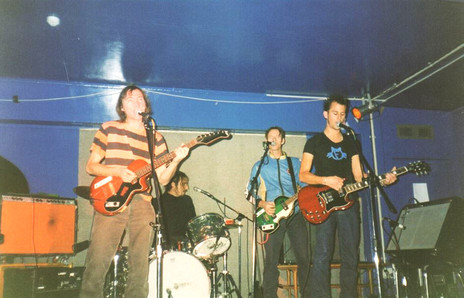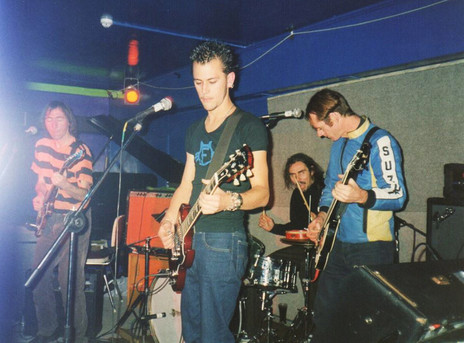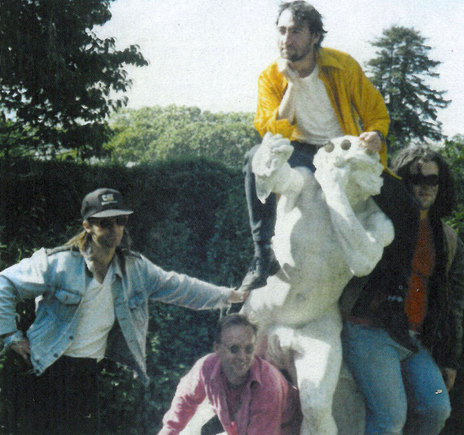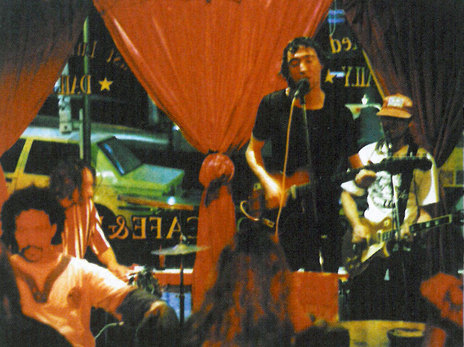Stuart Page: “The AXEMEN called a bit of a hiatus at one point, when Steve fell off the wagon. It was 1992, Bob was living with his wife Ingeborg in Auckland at the time, and he had all these songs, so I just took my drums around. It was just the two of us for quite a while, then one day we were out driving around and we pulled in to get some gas up on Ponsonby Road, and there’s John Segovia (Axel Grinders) filling up his car. We had quite a history, we’d known him for years in Christchurch but didn’t know he was up in Auckland. Bob says “Don’t feel like playing a bit of guitar with us, do ya?” and he says “Fuck yeah!”
The first line-up was completed by the arrival of Danny “Speedy” Mañetto on bass. Early on, Shaft had a different approach than most bands around Auckland, utilising a lo-fi/found-gear setup to create a quiet framework for the songs.
In 1993 grunge was peaking and everyone was playing super-loud.
Stuart Page: “This was 1993, grunge was peaking and everyone was playing super-loud. We would set up offstage, somewhere near the bar. We’d put the guitar and bass and the vocals through a couple of guitar amps, not through the PA, and I’d play drums quietly, sometimes with brushes. It probably only lasted a year like that. It was really enjoyable, and it set us apart. We weren’t consciously trying to make a particular sound, we were making do. None of us had any money, so we were doing it any way we could.”
Danny Mañetto recalls: “What often happened was that Bob Frisbee, who did our sound, would bring a small PA and set Shaft up beside the mainstage or on the other side of the room. But John and I certainly always had our own amps, two Kiwi classics: I played bass through a Holden Graphic 100 and John played a Gunn Classic combo. Bob Cardy always had a Frisbee amp at his disposal. It was kinda lo-fi but not as lo-fi as Stu remembers.”
Initially, the band rehearsed in the infamous Red House near K’ Rd before shifting to the National Foundation for the Deaf building in Parnell. Stuart Page: “We had a great room downstairs, beautifully carpeted, wood-panelled walls ... an amazing space to record in. From there we went to Bob Frisbee’s place. He had a studio and two practice rooms up on Symonds Street, over the road from The Incubator (Angus McNaughton’s recording studio). So as soon as we moved into that practice room, we immediately became part of that milieu. Bands like Nothing At All!, The Rainy Days, Supercar ...”
This line-up, along with multi-instrumental input from Rich Mixture, recorded the Pooty EP, which featured the gorgeously produced ‘Downhill Racer’, replete with lavish strings and multi-tracked vocal harmonies. A Stuart Page directed video of suitably cinematic silliness ably illustrates this New Zealand indie classic, one that somehow never made it into mainstream consciousness.
The Shaft line-up began its ongoing tendency to morph-out, and with it the sound of the music and style of performance changed gear. Rich Mixture, multi-instrumentalist, recalls a period after he joined where the band would play a residency at the Temple Bar on Queen Street as a stripped-down three-piece (Mixture, Segovia, Cardy), but this was during a transition to a much louder phase. Stuart Page: “John Segovia, Danny Mañetto and I left, and our replacements were much younger guys into the current scene, and the whole sound of Shaft did a 180 from this super-cruisy croony thing into a hard-out, bitchin’ rock’n’roll band. Some of Bob’s songs, quieter songs like ‘Round The Bend’, bring out the country element to his songwriting and his voice. That first line-up focused on that, giving his voice and the songs a super-mellow space. But whatever form Shaft takes, it’s his voice, really, that’s what the whole thing is about.”
Between 1997 and 1999, the Bob Cardy-led band featured a shifting roster of amazing talent including Rich Mixture (The D4, The Rainy Days), Tony Rush (The Users), Mark Petersen (Seeds Of Orbit, Straitjacket Fits, former live-sound wizard at the now defunct Kings Arms venue in Auckland), Cameron Rowe (The Brunettes) and Matt Brown (popular host on Auckland’s Max TV music channel).
Matt Brown: “Stepping into the band after John Segovia was a biggish thing, but I think I injected my own little retarded piece into the Shaft pie once I got settled. It was always a great band, and everyone had their own room to sit in a cool musical space.”
Over this period various permutations of this roster played on the recordings that make up the Open Sesame album (Lil’ Chief Records, 2004). On listening, there’s no clue to the album’s scrapbook recording schedule. It’s a wonderfully sequenced collection of great songs, catchy grooves, and wicked guitar playing that showcases Bob’s way with a word and a tune.
Bob Cardy’s soulful voice has the jagged tearfulness of the great singers.
John Bywater had this to say in the Listener, November 2004: “Tracks like ‘Might As Well Be Dumb’ and ‘Rosy Diamond’ effortlessly trump any Britpop you can name, taking lush guitar pop orchestrations into new rhapsodic space while keeping a sense of modesty and humour, and managing (like Sam Cooke or Solomon Burke) to be sincere and emotional without being camp, whiny or affected.” Bywater hits a particular nail on the head here: Bob’s soulful voice sometimes has the jagged tearfulness of the great singers. On ‘Might As Well Be Dumb’ Bob sings in a plaintive, lost voice from that beautiful no-man’s-land of New Zealand white-boy soul.
Rich Mixture: “Bob’s songs are just so amazing. As a player you could really get your teeth into them. They have such great colour, still do. The songs really evoke what’s needed to be played on them so I don’t need to pull something out of the air, they already speak to you and come fully formed. I absolutely loved to play all of them and was lucky to be part of it.”
Offstage, Bob Cardy is thoughtful and engaging, with a mischievous energy that can punctuate proceedings when you least expect. Onstage, the affable good-natured gent can transform into a rock’n’roll animal. Halfway through the set, Bob’s shirt might come off and he’ll leap onto the dance floor with his guitar, next thing he’s laying on his back in the middle of the crowd.
Stuart Page: “One time at King’s Arms early 2000s, Bob climbed up onto the bar wearing his unplugged guitar doing this crazy dance, stepping over people’s glasses all the way down the length of the bar, twisting and turning. No shirt, sweating like crazy, people trying to get their drinks out of the way, the band on stage still grinding away ... the bar staff were completely blasé and cool with it, which was great. He did a lightweight version of that at the Golden Dawn, one of the last nights before they closed. Climbed up onto the bar, playing guitar. Bar person freaked out a bit.”
Rich Mixture: “I remember playing songs like ‘Maria’ and ‘How Long’ at the Globe Hotel and during the solo, Bob would go out onto the footpath and rock out on the street. We seemed to play every week at the King’s Arms or somewhere, and the band was getting tighter and tighter and more and more danceable. We did a few national tours, but our only overseas trip was to Melbourne in 2000. I remember we stayed at a motel in St Kilda which doubled as a prostitutes’ headquarters. We did a whistle-stop tour of Melbourne, retiring at night to the sounds of cat-fighting ladies of the night squabbling in the car park. I have always felt our best work as a band was done on stage, and I’m not sure we truly captured the energy we produced when we were cookin’ at a show.”
SHAFT SEEMED TO BE ON A NEVER-ENDING TOUR OF AUCKLAND.
Shaft was always playing somewhere. Andrew Schmidt wrote that the band was on “... a never-ending tour of Auckland, and less frequently, national venues, big and small, in the late 1990s and 2000s.”
And Bob was always writing songs. The best of the new crop arrived on the album Down At Your Life (Lil’ Chief Records, 2006). Produced by Bob Frisbee (also known as Z. Bob) and featuring additional piano, drums, and guitar from Rich Mixture, the recordings are anchored by the appearance of Samuel and Stu Kett from South Auckland garage band The Situations on bass and drums respectively, and Ben Maitlin (Boxcar Guitars) on guitar. The spectrum of tunes runs from ‘Inside’ which is a bona fide epic in the vein of ‘Downhill Racer’, to ‘Got To Be Strong’ which channels the ol’ Gram Parsons magic, to the bittersweet rollicking drink-to-forget of ‘Our Blue Hell’.
By 2011 the rest of The Situations had stepped in as the live Shaft band, along with original member John Segovia on lap steel and second guitar. Fitfully active, this line-up has continued the Shaft rock and roll legacy with live shows and the completion of a new batch of songs for an upcoming album.
